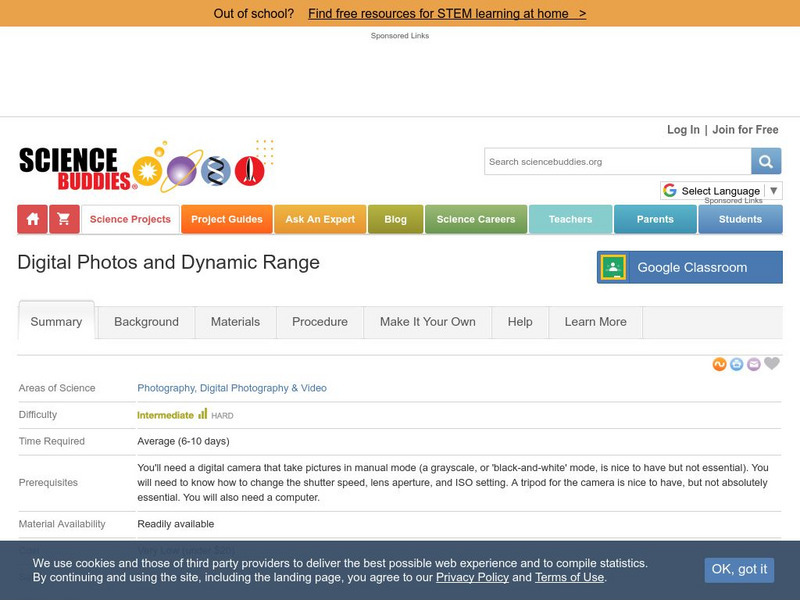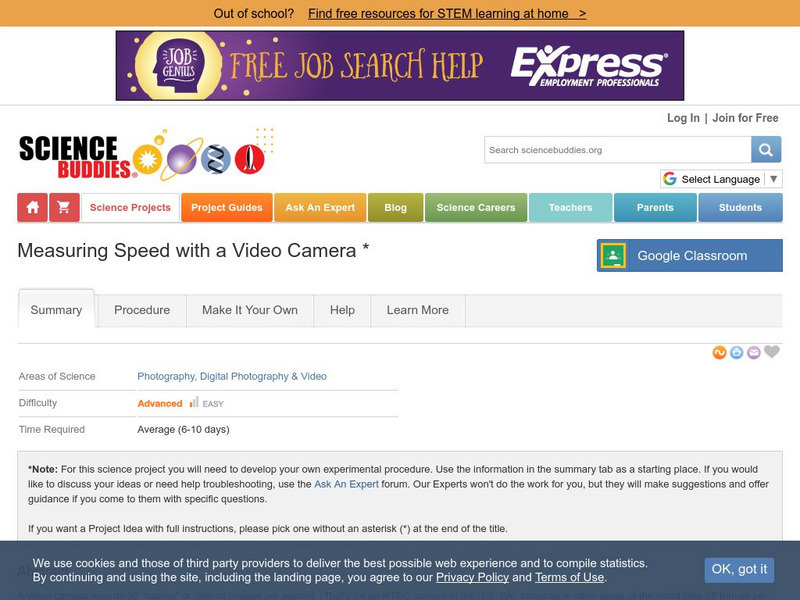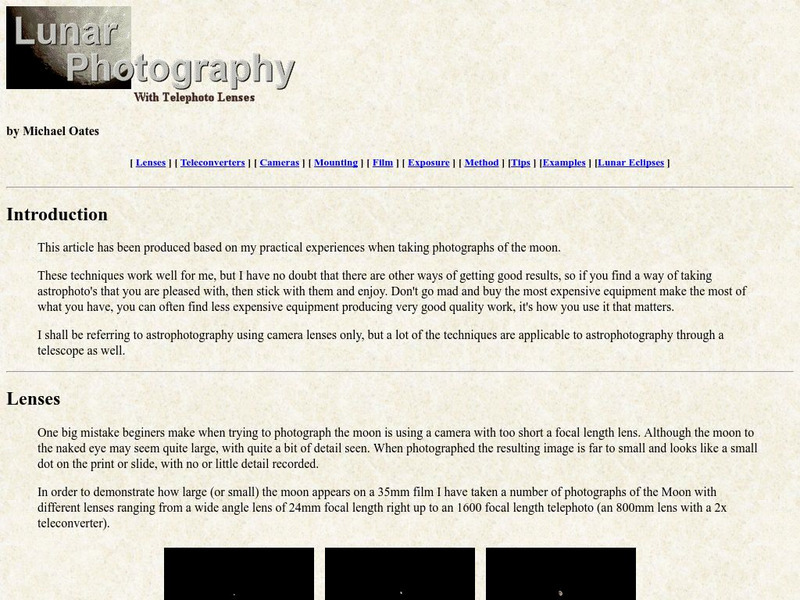Hi, what do you want to do?
NASA
Keeping Nine Eyes on the Weather
Take a look at climate change from another angle. Readers learn about the MISR instrument on the Terra satellite and how it studies Earth. Pupils experience how the multiple cameras give scientists multiple views so they can better study...
Curated OER
Earth: Land Use Picture Project
Students explore how changes in human land use are impacting local environments. They also explore some of the social impacts of various land uses in their area. They identify and discuss some social impacts of the different land uses.
Curated OER
Photo Essay Semester Project
Students reinforce research and organizational skills with this project. They create a photo essay and conduct an interview with a person associated with their chosen topic. Pupils may choose to get their pictures from a digital camera,...
Science Buddies
Science Buddies: Digital Photos and Dynamic Range
Digital cameras can be a great way to learn about photography. Most digital cameras today have LCD screens, so you get instant feedback on your photo. If you make a mistake, no problem, you just delete the picture. It's nice that you...
Science Buddies
Science Buddies: Camera Lens Testing
This activity helps students learn more about cameras, and how to take better pictures.
Science Buddies
Science Buddies: Photography With Near Infrared Illumination
Have you ever wondered what it would be like to have an extra sense? What if you could hear above the normal range (ultrasound) like dogs or bats? This project shows you how you can use a camera, tripod and a special filter to take...
Science Buddies
Science Buddies: Measuring Velocity With a Video Camera
A video camera records 30 "frames" or distinct images per second. (That's for an NTSC camera in the U.S. PAL cameras in other areas of the world take 25 frames per second.) You can use this fact to time events and measure velocity. One...
Science Buddies
Science Buddies: Digital Pinhole Camera
If you sit under a leafy tree on a sunny day, you may notice spots of sunlight on the ground from light passing through spaces between the leaves. Try putting a piece of cardboard on the ground and examining the spots of light on the...
Science Buddies
Science Buddies: Measuring Height or Distances With a Camera
If you know or calculate the field of view for your camera, you can use it to measure distances and the height of almost anything. It's all a matter of basic trigonometry.
Science Buddies
Science Buddies: Pinholes, Light and Aperture Size
Pinhole cameras are not a thing of the past. Even compared to all of the latest technology, a pinhole camera still gets beautiful results. Find out how this very simple aperture design works to control the way light enters the lens of...
Scholastic
Scholastic: 100 Ways to Use Digital Cameras
This resource presents 100 different ways to use a digital camera in the classroom.
Read Works
Read Works: Forms of Art Photography
[Free Registration/Login Required] This nonfiction text discusses cameras act like the human eye. The article discusses how photography makes our lives richer in many ways.This passage is a stand-alone curricular piece that reinforces...
Other
Mas: Lunar Photography With Telephoto Lenses
Ever taken a picture of a nice large full Moon, only to find that it looks like a small dot on your finished photograph? This site explains why, and offers tips on taking good pictures of the Moon.
George Eastman Museum
George Eastman House: How to Make a Camera Obscura [Pdf]
Resource provides history and background information about the camera obscura. There are also easy to follow instructions for you to make your own version of the camera obscura to better understand the history and technology behind...
George Eastman Museum
Eastman House: Camera Maze [Pdf]
Print this maze from the George Eastman House museum and find your way through the camera.


















![George Eastman House: How to Make a Camera Obscura [Pdf] Activity George Eastman House: How to Make a Camera Obscura [Pdf] Activity](https://static.lp.lexp.cloud/images/attachment_defaults/resource/large/FPO-knovation.png)